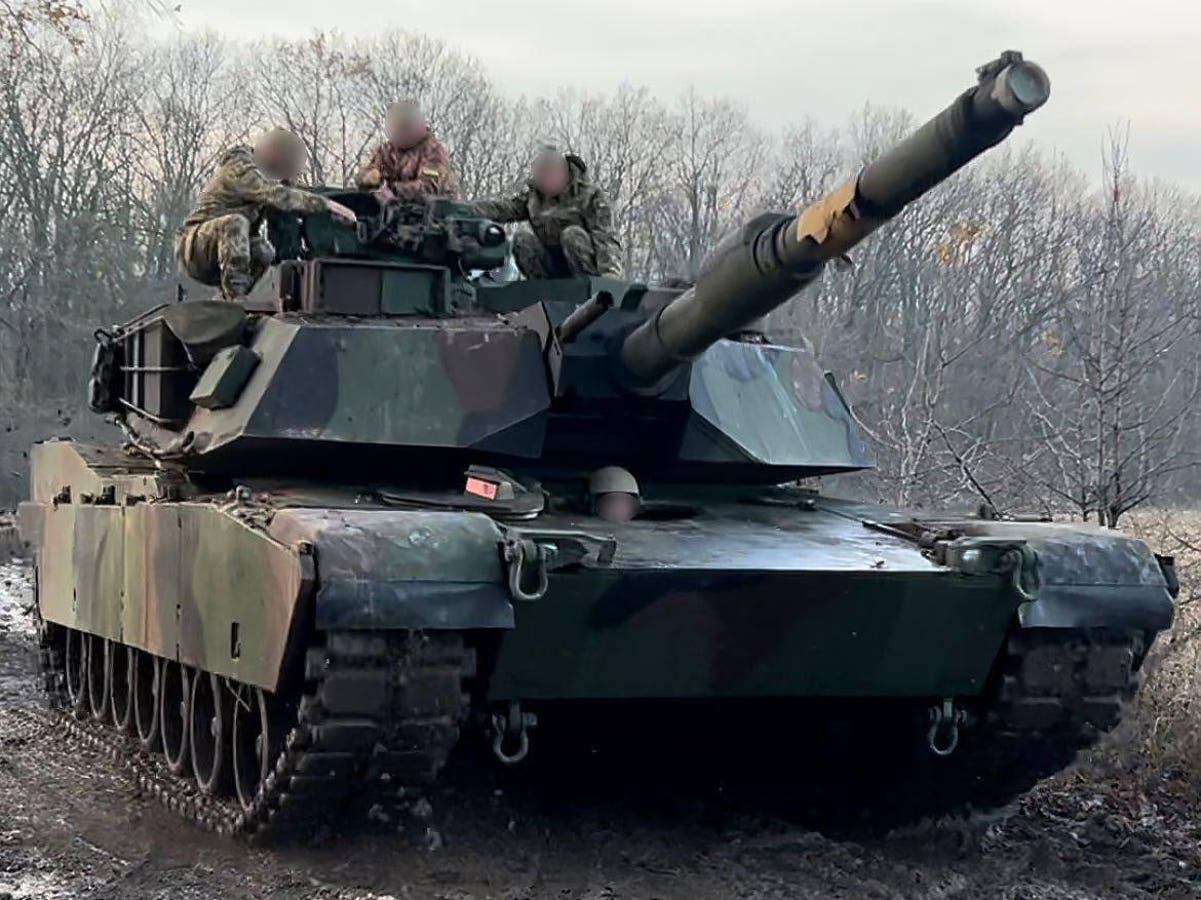More and better photos of Ukraine’s American-made M-1A1 tanks have appeared online in recent days. The third and most recent image, which circulated on social media on Sunday, underscores a little-known feature of the 2006-vintage tanks.
Look closely at the commander’s weapons station—the cupola on the right side of the tank’s turret. The tank’s right, that is.
You’ll note, fitted to the mount for the commander’s M2 heavy machine gun, a globe-like sensor. That’s the thermal sight for the M-1A1’s Stabilized Commander’s Weapon Station.
The sight allows a commander to look around the tank, and fire their machine gun, without leaving the protection of the thickly-armored turret. It was a new feature on the ultimate American version of the M-1A1, itself an improved version of the original M-1 from the 1980s.
The U.S. Army currently assigns late-model M-1A1s to a few National Guard brigades, while active-duty brigades ride in the latest M-1A2s. Ukraine is getting 31 M-1A1s—with tungsten armor replacing their unexportable uranium armor—from ex-U.S. Army stocks.
It’s possible the United States ultimately will donate to Ukraine many more M-1s: the Americans keep thousands of the 67-ton, four-person tanks in storage.
The M-1A1’s Stabilized Commander’s Weapon Station, built by Merrill Technologies Group in Michigan, is “a direct, bolt-on solution,” according to the company. It slots into an M-1’s existing commander’s hatch with minimal effort.
Many modern tanks have weapons stations for their commanders, usually fitted with a heavy machine gun. Of those, most feature 360-degree vision—often via armored prisms—plus some kind of remote trigger so the commander doesn’t have to stick their head out of the turret in order to fire the machine gun.
What’s special about the M-1’s SCWS is that it’s stabilized and adds a thermal camera, which feeds into a display inside the turret, so that the commander’s gun is useful around the clock and in smoky and rainy conditions. All while the tanks is moving.
“The thermal sight can be used for 24 hours,” said James Shaffer, a systems engineer who worked on upgrades to the commander’s station for U.S. Marine Corps tanks. “It has low-light capabilities, can see through obscurants and works in diverse environments under adverse weather conditions.”
The better the tank commander sees, the better they—well—command. “Situational awareness is key for tank commanders,” the Marines stated. It’s not for no reason the U.S. Army calls the M-1A1 with the stabilized commander’s sight and thermal optics the “Situational Awareness” model: the M-1A1SA.
Read the full article here





